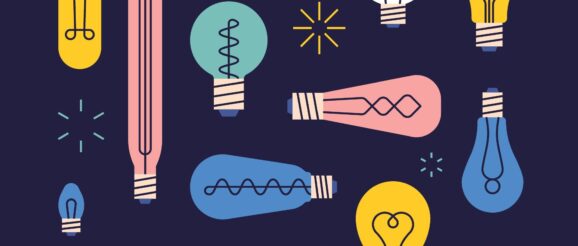How Researcher-Practitioner Partnerships Spark Innovation – CASEL

In this post, we’d like to (1) introduce a novel model of schooling that integrates academic learning with SEL and (2) highlight how researcher-practitioner partnerships can advance our understanding of these innovative approaches to educating students.
The Teacher Perspective: Ms. Schmeling
Over the past decade, I have taught in an educational model that integrates SEL and academic learning through a unique appreciation of the nervous system. This model understands SEL as a thread to be woven into the fabric of everyday school processes. My experience has allowed me to see how traditional education can be transformed to a space where all students are successful. Below, we summarize how many traditional educational models understand the school system, its approach to discipline, and its priorities. In contrast, we summarize our integrated educational model’s understanding of each of these components, which form the three pillars of the model and our approach to SEL.
| Traditional Education Model | Integrated Education Model | |
| Emphasis of the System | School-Level Order: Supports order and operation of physical school space | Student-Level Regulation Within the System: Recognizes that the school environment, including adults and policies, work together to support individual students’ self-regulation Pillar 1: “Power-With” Structure – |
| Discipline | Compliance and Consequence-Based: Emphasis on attendance, citations, and external motivation | Inclusive and Restorative: By understanding that stress drives behavior, discipline is constructive Pillar 2: Self-Regulation – |
| Priority | Academics: Grades and test scores are the most important benchmark of success | Academic, Social, Emotional, and Physical Well-Being: Each domain is a priority Pillar 3: Regulated Routines for Holistic Well-Being – |
SEL is integrated into the three main pillars that ground this educational model: a “power-with” structure, emphasis on self-regulation, and regulated routines for holistic well-being. As an example, we highlight how self-management, in particular, is developed within each of these pillars. A “power-with” structure grows out of meaningful relationships between teachers and students, with each member of the community as an equal participant. Rather than telling students what to do, students have autonomy to select their activities through authentically identifying their strengths, needs, and areas of growth. By working with students, this structure empowers students to manage themselves and their learning rather than following rote instruction.
With regard to self-regulation, we work on developing students’ self-management skills through understanding the body’s regulatory process of the nervous system. The nervous system is a unifier—everyone has one. Learning about emotions and how they manifest in the body through the nervous system destigmatizes mental health challenges and behaviors, which are often met with harsh disciplinary action. This allows everyone to authentically connect to the conversation about how they practice self-management without fear of stigma or punishment.
Finally, with regard to addressing all domains of well-being, students develop self-management skills by following a consistent regulating sequence. Our daily schedule consists of a predictable start to the day, time for authentic connection (classroom instruction done deliberately in a circle), personal centering (daily walk), student-driven exploration (student inquiry-based academics), and reflection (planning next steps and self-reflection). Within this schedule, we provide time for developing not only students’ academic learning, but also their social, emotional, and physical well-being.
We’ve heard positive feedback about how students in this integrated educational model improve their social and emotional skills, in addition to their attendance, behavior, and likelihood of graduation. What we didn’t have were quantitative assessments of the impacts of this integrated education model that we could bring back to key stakeholders, such as parents, school administration, and community members.
The Researcher Perspective: Dr. Braun
As researchers, we often have our own ideas about what types of programs should be studied, yet a solely researcher-focused agenda does not shed light on the creative ways teachers may already be integrating SEL into everyday schooling. In reaching out to collaborate on investigating the impacts of this novel integrated educational model, Ms. Schmeling and I have formed a partnership that merges rigorous scientific inquiry with a real-world need.
This partnership has challenged both of our thinking: How do we develop an evidence-base for an approach that is already embedded within a school context? How do we measure change in students’ attitudes and beliefs about school? How do we demonstrate the effectiveness of a program without using test scores? How do we bring rigorous research to our understanding of this real-world program?
Ms. Hallie Schmeling, has co-created, evolved, and taught in an innovative education program for the past 12 years in southeast Wisconsin. She also co-hosts a podcast called Educators Amplified that gives voice to teachers in the school system to build hope and preserve the education profession. Follow her on Instagram and Facebook @EducatorsAmplified.
Dr. Summer Braun is an assistant professor in the Department of Psychology and affiliated with the Center for Youth Development and Intervention at the University of Alabama. Her program of research focuses on understanding teachers’ social and emotional competencies, occupational health, and well-being, and their associations with students’ social, emotional, and behavioral development using a variety of methodological approaches. Her work bridges research and practice by studying interventions designed to support the health and well-being of teachers and students, such as mindfulness-based wellness programs. She is also a CASEL Weissberg Scholar. Connect with her via email ([email protected]) or Twitter @SummerBraun_PhD.
The views in this blog are those of the authors and do not necessarily reflect the views of CASEL.
